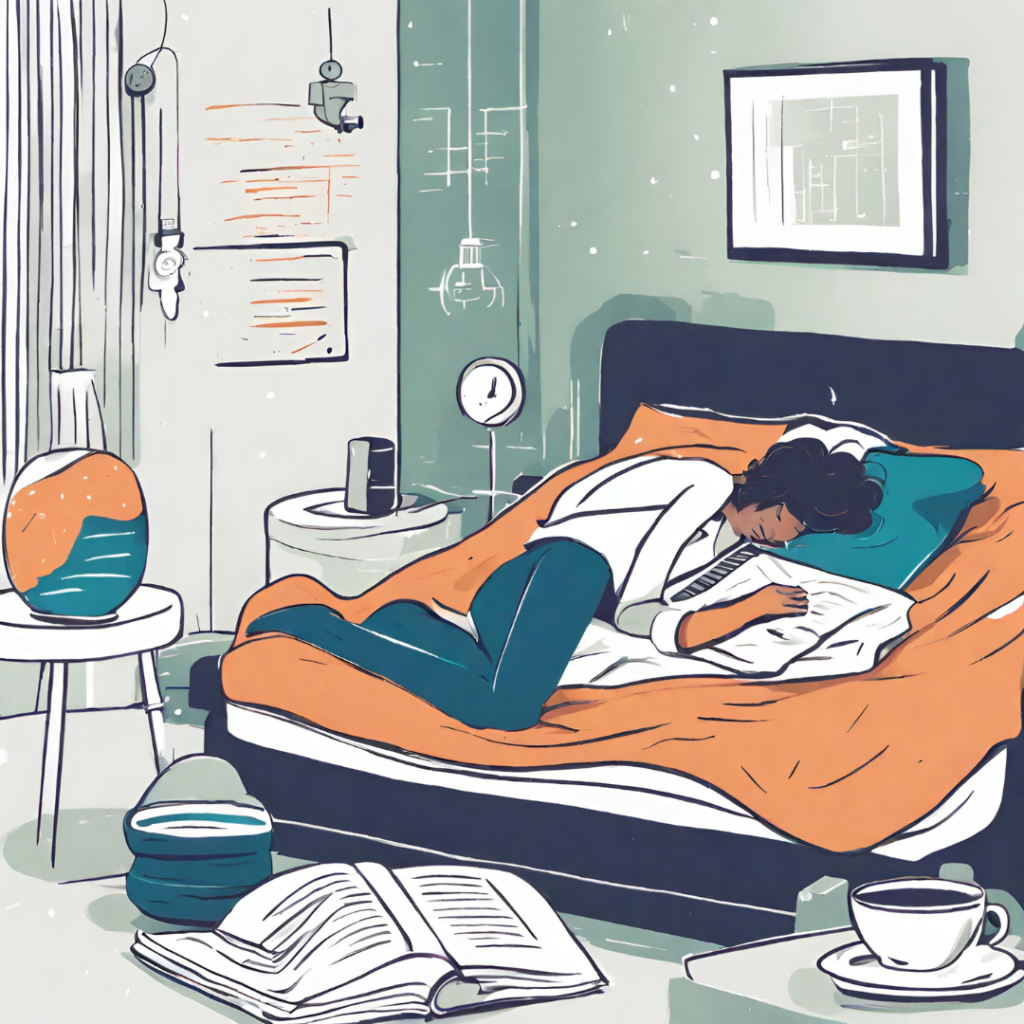In the quest for optimal health and productivity, understanding the intricate dance between napping and our circadian rhythms is essential. The circadian rhythm, often referred to as the body’s internal clock, regulates the sleep-wake cycle and influences physical, mental, and behavioral changes within a 24-hour cycle. Napping, when aligned with these natural rhythms, can be a powerful tool for rejuvenation and enhanced well-being. This comprehensive guide delves into the symbiotic relationship between napping and circadian rhythms, offering insights and tips on how to harmonize your naps with your internal clock for maximum benefit, particularly focusing on the optimal napping times for circadian health.
Understanding Circadian Rhythms for Better Napping Practices
Circadian rhythms are physical, mental, and behavioral changes that follow a daily cycle, responding primarily to light and darkness in the environment. These rhythms affect most living organisms and are found in animals, plants, and even microbes. In humans, the circadian rhythm is responsible for regulating sleep patterns, feeding habits, hormone release, and other bodily functions. Emphasizing the significance of aligning your napping schedule with these rhythms is key to optimizing your circadian health.
The Role of the Suprachiasmatic Nucleus (SCN) in Circadian Health
The master clock that controls circadian rhythms is located in the brain, specifically in a group of cells within the hypothalamus known as the suprachiasmatic nucleus (SCN). The SCN receives direct input from the eyes, allowing it to adjust based on light exposure, and, in turn, influences the production of melatonin, the hormone that promotes sleep. Understanding the SCN’s role offers insights into the best times to nap for circadian alignment.

The Interplay Between Napping and Circadian Rhythms
Napping, when done in harmony with your circadian rhythm, can be a restorative practice that enhances alertness, mood, and performance. However, napping at odds with your internal clock can lead to grogginess and disrupted nighttime sleep. This section emphasizes the importance of timing your naps for optimal circadian health.
Ideal Nap Times for Circadian Rhythm Alignment
Research suggests that the optimal time for napping aligns with the post-lunch dip in alertness, which typically occurs between 1 PM and 3 PM. This window corresponds with a natural decrease in energy and alertness as part of the circadian cycle, making it an ideal time for a brief rest. Aligning your napping schedule within this timeframe is a crucial step in maintaining circadian health.
Duration Matters for Circadian Health
The length of your nap can also influence how it interacts with your circadian rhythms. Short “power naps” of about 10-20 minutes can provide a quick boost without significantly affecting nighttime sleep. Longer naps, especially those exceeding 30 minutes, can lead to sleep inertia and may interfere with your circadian-driven sleep-wake cycle. It’s important to consider the duration to optimize your napping habits for circadian health.
Napping Strategies Aligned with Circadian Rhythms for Enhanced Well-being
1. Be Consistent with Timing
Try to nap at the same time each day to reinforce your body’s natural rhythms. Consistency helps your body anticipate and prepare for rest, making it easier to fall asleep and wake up feeling refreshed. This routine is crucial in establishing optimal napping times for your circadian health.
2. Keep Naps Short
Aim for brief naps to minimize the impact on your circadian rhythms and avoid disrupting nighttime sleep. This approach is in line with maintaining circadian health by preventing sleep inertia.
3. Embrace the Power Nap
The power nap is particularly well-suited for aligning with circadian rhythms due to its short duration and the fact that it typically occurs during the post-lunch dip in energy. This type of nap perfectly encapsulates the concept of optimal napping times for circadian health.
4. Consider Your Individual Circadian Rhythms
Everyone’s internal clock is slightly different. Pay attention to your body’s signals and adjust your napping habits accordingly. Some may benefit from an earlier or later nap time based on their unique circadian rhythms. Personalizing your napping schedule is a key aspect of optimizing circadian health.
The Impact of Napping on Circadian Rhythms
Beneficial Effects:
- Improved Alertness: A nap aligned with your circadian rhythm can significantly enhance alertness during the typical afternoon slump.
- Enhanced Cognitive Function: Strategic napping can improve memory, creativity, and decision-making skills.
- Mood Regulation: A well-timed nap can combat fatigue-induced moodiness and stress.
Potential Drawbacks:
- Disrupted Nighttime Sleep: Napping too late in the day or for too long can interfere with your ability to fall asleep at night, impacting your circadian health.
- Sleep Inertia: Longer naps can lead to grogginess and disorientation upon waking if they extend into deeper sleep stages.

Tips for Napping in Harmony with Your Circadian Rhythms
1. Monitor Your Energy Levels
Pay attention to natural dips in alertness throughout the day. These often indicate the best times to nap according to your circadian rhythm, helping you identify optimal napping times.
2. Create a Conducive Environment
To facilitate quick napping, ensure your environment is dark, quiet, and comfortable. This signals to your body that it’s time to rest and aligns with maintaining circadian rhythm health.
3. Use Technology Wisely
Various apps and wearable devices can track your sleep patterns and circadian rhythms, offering personalized recommendations for optimal nap times.
4. Limit Light Exposure Before Napping
Dim the lights or use an eye mask to encourage melatonin production and signal to your body that it’s time to rest, a crucial aspect in circadian rhythm health.
5. Stay Hydrated and Mindful of Caffeine
Proper hydration supports healthy sleep, while caffeine consumption should be timed carefully to avoid disrupting your ability to nap and maintain circadian health.
Conclusion: Embracing Optimal Napping Times for Circadian Health
Napping, when aligned with your circadian rhythms, can be a powerful ally in maintaining optimal health and well-being. By understanding the delicate interplay between napping and your internal clock, you can harness the restorative power of naps without compromising your nighttime sleep. Embrace the principles of circadian rhythm-aligned napping, and unlock a world of enhanced alertness, mood, and cognitive function. Whether you’re a busy professional, a dedicated student, or anyone seeking to optimize their rest, remember that a well-timed, circadian-aligned nap can be a rejuvenating pause in the rhythm of your day.


